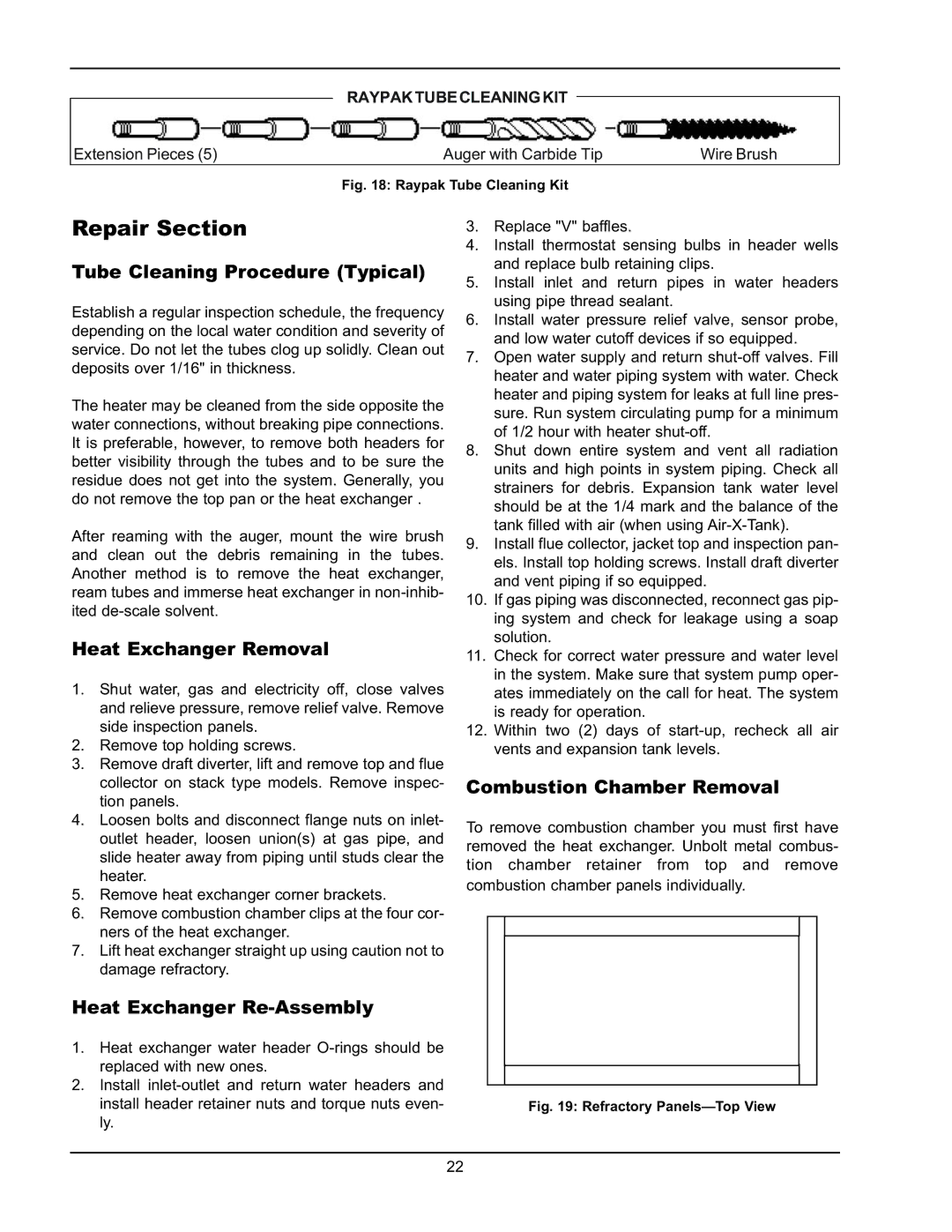0090A, 0135A, 0195A specifications
Raypak is a leading manufacturer in the pool and spa industry, known for its reliable and innovative heating solutions. Among its product line, the Raypak 0090A, 0135A, and 0195A are notable models that stand out for their efficiency, durability, and advanced technology.The Raypak 0090A is ideal for residential pools, offering a heat output of 90,000 BTU per hour. It utilizes a copper heat exchanger, which provides efficient heat transfer and is resistant to corrosion, making it perfect for chlorinated pools. This model features a digital thermostat that enhances user control, allowing for precise temperature settings. Additionally, the 0090A is compatible with both natural gas and propane, providing flexibility depending on user preference.
The Raypak 0135A, with its 135,000 BTU output, is designed for larger residential pools or smaller commercial applications. This model employs advanced energy-efficient technology, helping to reduce operational costs while maintaining optimal heating performance. One of the key features of the 0135A is its built-in electronic ignition system, which improves reliability and eliminates the need for a standing pilot, enhancing safety and efficiency. The unit's compact design allows it to fit in tight spaces while still providing robust heating capabilities.
The Raypak 0195A is the most powerful of the trio, delivering 195,000 BTU, making it suitable for larger pool setups and high-demand environments. It also uses a copper heat exchanger, ensuring excellent heat retention and durability against corrosion. The 0195A is equipped with an easy-to-use digital display, offering intuitive controls for temperature adjustments and operational monitoring. This model also incorporates a high-tech air intake design, which maximizes airflow and reduces energy consumption.
All three models are designed for outdoor installation and possess weather-resistant features, ensuring longevity and reliability through various environmental conditions. Additionally, they are equipped with easy access service panels for maintenance, ensuring that servicing is efficient and straightforward.
In summary, Raypak's 0090A, 0135A, and 0195A models are designed to meet diverse heating needs with advanced technology, energy efficiency, and robust construction, making them excellent choices for anyone looking to enhance their pool experience.

